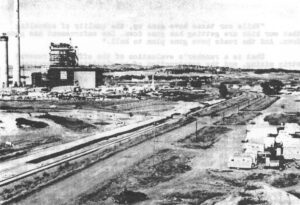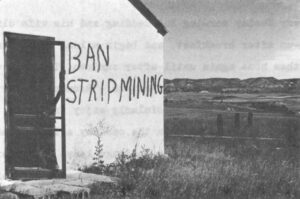James A. Conaway
- 1974

Fellowship Title:
- Strip Mining in the American West and Related Energy Problems
Fellowship Year:
- 1974
Wildcatting in Texas:Oil and Gas Prospect is, Profitable,Despite Complaints
Ten thousand independent oilmen are presently operating in the United States. The high price of oil and gas will probably increase that total by four or five thousand during the next ten years. These wildcatters range in degree of success and available assets from men like Jake Hamon and Monty Moncrief in office suites of Dallas and Fort Worth down to the operators of “stripper” wells in west Texas. Not all independents operate primarily in the Lone Star state, but most do. And the business has become fun again, because it is profitable. Today more than one third of domestic oil and gas production comes from Texas. The state has eight thousand established fields, and almost two hundred thousand producing wells. Three and a half million barrels of oil are pumped out of Texas every day — an impressive figure when compared to the output of any oil and gas-producing nation. Yet production in Texas could be much greater. Exploration has increased, but not in any reasonable proportion to the rise in the price of
Coal and the Environment: Does the Industry Really Care?
This year’s conference on Coal and the Environment, sponsored by the National Coal Association, the industry’s lobbying group, provided the annual showcase for promotion — both of the industry, and the manufacturers who serve it. Purveyors of products ranging from executive helicopters and the latest and largest earth-moving equipment to polished charcoal briquettes gathered at the Exhibition Center in Louisville, where salesmen in double-knit suits and their female counterparts in hotpants hawked the most recent developments in mining technology. Meanwhile, the auditorium leading off the main hall were filled with government and industry representatives listening to discourses by experts on coal mine drainage, mined land reclamation, mine refuse disposal, and emission control. Not the most fascinating program for laymen, and yet one of some interest to most observers. Opinions did surface — often inadvertently — suggesting that coal development is not uniformly beneficial to all areas, and reclamation is no certainty. A spokesman for the economic research service of the United States Department of Agriculture, Frank H. Osterhoudt, addressed himself to the economic and social

Colstrip: Effects of the Boom
“While our taxes have gone up, the quality of schooling that our kids are getting has gone down. Law enforcement has gone down. And the roads have gone plum to hell.” That is a rancher’s evaluation of the effect of renewed strip mining, and the construction of an electrical generating complex at Colstrip, in eastern Montana. A resident of near-by Forsyth, the seat of Rosebud County, feels the effects of coal development in a different way: “It’s really changing the social structure. I used to stop down and have a beer after work, but the bum are so rough now, I don’t. I’ve lived in Forsyth all my life, and it’s like it’s not my community anymore.” Rosebud County sits on top of one of the largest known deposits of low-sulphur coal, and the largest source of easily strippable coal in America. The little town of Colstrip has known boom times before, the name a tribute both to coal and to the method of extracting it that so changed the adjacent landscape. Some of the

Progress In Sarpy Creek: Strip Mines Make Bad Neighbors
Every Sunday morning Bud Redding and his wife climb into their pick-up after breakfast, and begin a long drive that will not bring them home again until after sundown. They may visit say of a number of towns in eastern Montana – Roundup, Forsyth, or Billings – not because they particularly enjoy traveling, or because they want to leave home on the one day a farmer and rancher can relax and loaf a little. The Reddings leave home every Sunday because the opening of the strip mine on the edge of their property by Westmoreland Resources brings the curious from miles around. Most of them are acquainted with the Reddings, and either feel obliged to visit, or compelled to discuss the progress of the huge dragline, and its effects on the Reddings. Sometimes they just ask directions, before driving up the fence line to gape at the cavernous hole lined with thick seams of black, sub-bituminous coal, and the towering boom of the dragline, that dwarfs the hills seem from the read. It in capable

Stripping The West: A Social Contract for Mining
The bill regulating strip mining that vas recently passed by the House of Representatives is no deathblow to coal as loose industry representatives say it is. But, the bill did effectively dampen the notion of stripping Montana, Wyoming, and North Dakota as a fast and highly profitable response to the present energy shortage, and it may well have altered the future of coal mining in America. H.R. 11500, the Surface Mining Control and Reclamation Act of 1974, the Interior Committee bill co-sponsored by Morris K. Udall of Arizona, and Patsy T. Mink of Hawaii, sparked one of the longest and most acrimonious debates in years, centering not just on land reclamation but an the issues of east versus west in future coal production, and on the social responsibility of an industry that has abused the lend for too long. The bill, presently in conference, does set environmental standards for mine operators, and it requires that land be returned to its approximate original contour after stripping. It differs only slightly from an equally strict Senate bill
